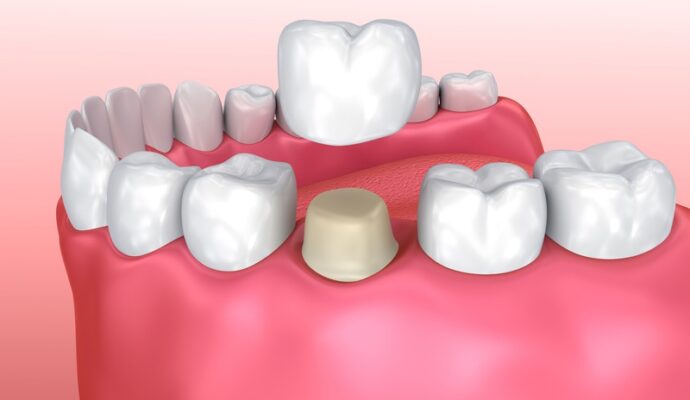Invisalign aligners have revolutionized orthodontic treatment by providing a clear, removable, and comfortable alternative to traditional metal braces. Introduced in the late 1990s, these modern aligners utilize cutting-edge technology to gradually straighten teeth, offering a discreet solution for individuals seeking an improved smile. But how do these seemingly simple plastic trays achieve such significant dental transformations? This article delves into the science and mechanics behind Invisalign, exploring the process from initial consultation to the final, perfect result.
Invisalign aligners represent a modern approach to orthodontics, using advanced technology to gradually shift teeth into optimal positions through a series of clear, custom-made trays. Here’s a comprehensive look at how this innovative system operates:
1. Initial Consultation and Assessment
The journey with Invisalign begins with an initial consultation with an orthodontist or dentist trained in Invisalign treatments. During this visit, the dental professional assesses your oral health, examines your teeth, and discusses your orthodontic goals. Finding a local expert is a key step for those seeking dental care in Philadelphia. They will determine if Invisalign suits your needs or if other orthodontic treatments might be more appropriate. This initial evaluation is crucial for understanding your treatment options and setting realistic expectations for the outcome.
2. Digital Scanning and Impressions
If Invisalign is deemed a good fit, the next step involves creating a detailed 3D model of your teeth. Traditionally, this would involve taking physical impressions of your teeth, but today, many dental practices use digital scanning technology. This non-invasive method quickly captures accurate images of your teeth and gums, producing a precise digital model. This model forms the basis for designing your customized treatment plan.
3. Custom Treatment Plan
With the digital model, your orthodontist or dentist will create a personalized treatment plan using advanced computer software. This software maps out the exact movements your teeth need to make to achieve the desired alignment. If you are considering Invisalign treatment in Philadelphia, you’ll often be shown a virtual simulation of your treatment, demonstrating how your teeth will shift over time and the anticipated final result. This plan provides a clear roadmap for your treatment and helps you understand the overall process.
4. Creation of Aligners
Based on the treatment plan, a series of custom aligners is created using state-of-the-art 3D printing technology. Each aligner is made from a smooth, transparent plastic material designed to fit snugly over your teeth. The aligners are crafted to apply gentle, precise pressure to specific teeth, moving them incrementally into their correct positions. Each set of aligners is tailored to address different stages of the tooth movement process.
5. Wearing the Aligners
You will wear each set of aligners for about one to two weeks, as directed by your orthodontist. It’s crucial to wear the aligners for approximately 20 to 22 hours daily, only removing them for eating, drinking (except water), and brushing or flossing your teeth. The aligners gently pressure your teeth, gradually shifting them into the desired alignment. Adhering to this schedule ensures that the treatment progresses as planned and that each aligner effectively moves your teeth.
6. Gradual Tooth Movement
As you progress through the series of aligners, each set is designed to make slight adjustments to the positions of your teeth. The aligners are engineered to move your teeth in a precise sequence, gradually achieving the desired alignment. This gradual movement helps reduce discomfort and minimizes the risk of complications. The process is highly controlled, with each new set of aligners bringing your teeth closer to their final positions, as outlined in your initial treatment plan.
7. Regular Check-Ups
You will have regular check-ups with your orthodontist or dentist throughout the treatment. These visits allow them to monitor your progress and ensure that your teeth move according to the plan. They may take new scans or X-rays to assess the alignment and make necessary adjustments to your treatment. These check-ups are essential for ensuring the treatment stays on track and promptly addresses any issues.
8. Final Stages and Retainers
Your treatment concludes after completing the series of aligners and achieving the desired alignment. Your orthodontist will provide you with retainers to help maintain your new smile. Retainers are usually worn at night or as instructed, and they play a crucial role in preventing your teeth from shifting back to their original positions. Proper use of retainers is essential for preserving the results of your Invisalign treatment.
9. Ongoing Maintenance
Even after the active phase of Invisalign treatment, maintaining good oral hygiene and attending regular dental check-ups is vital. These visits ensure that your teeth remain healthy and that potential issues are addressed early. Your orthodontist will guide you in caring for your retainers and keeping your teeth in their new positions. They can even suggest treatments like KöR teeth whitening to enhance the brightness of your smile. Regular maintenance helps ensure long-term success and the continued health of your smile.
10. Integration with Advanced Technologies
Invisalign aligners utilize advanced technologies to enhance treatment accuracy and patient experience. Here’s how these technologies integrate into the process:
-
3D Imaging and CAD/CAM Technology: The creation of Invisalign aligners begins with detailed 3D imaging of your dental structure using advanced CAD/CAM (Computer-Aided Design/Computer-Aided Manufacturing) technology. This technology allows for precise modeling and visualization of your teeth and their movement, ensuring that each aligner is custom-designed to achieve optimal results.
-
ClinCheck Software: ClinCheck is a proprietary software used to create a digital treatment plan. This software simulates the entire treatment process, showing how your teeth will move through each stage of alignment. It provides a virtual preview of the final result, helping you and your orthodontist understand the expected outcome and make any necessary adjustments to the plan before treatment begins.
Wrapping Up
Invisalign aligners work through a sophisticated process that combines digital technology, precise engineering, and gradual tooth movement to achieve a straighter smile. From the initial consultation and digital modeling to creating custom aligners and ongoing monitoring, each step is designed to ensure an effective and comfortable treatment. Following the prescribed aligner schedule and attending regular check-ups, you can achieve the desired alignment and enjoy the benefits of a discreet and effective orthodontic solution.




